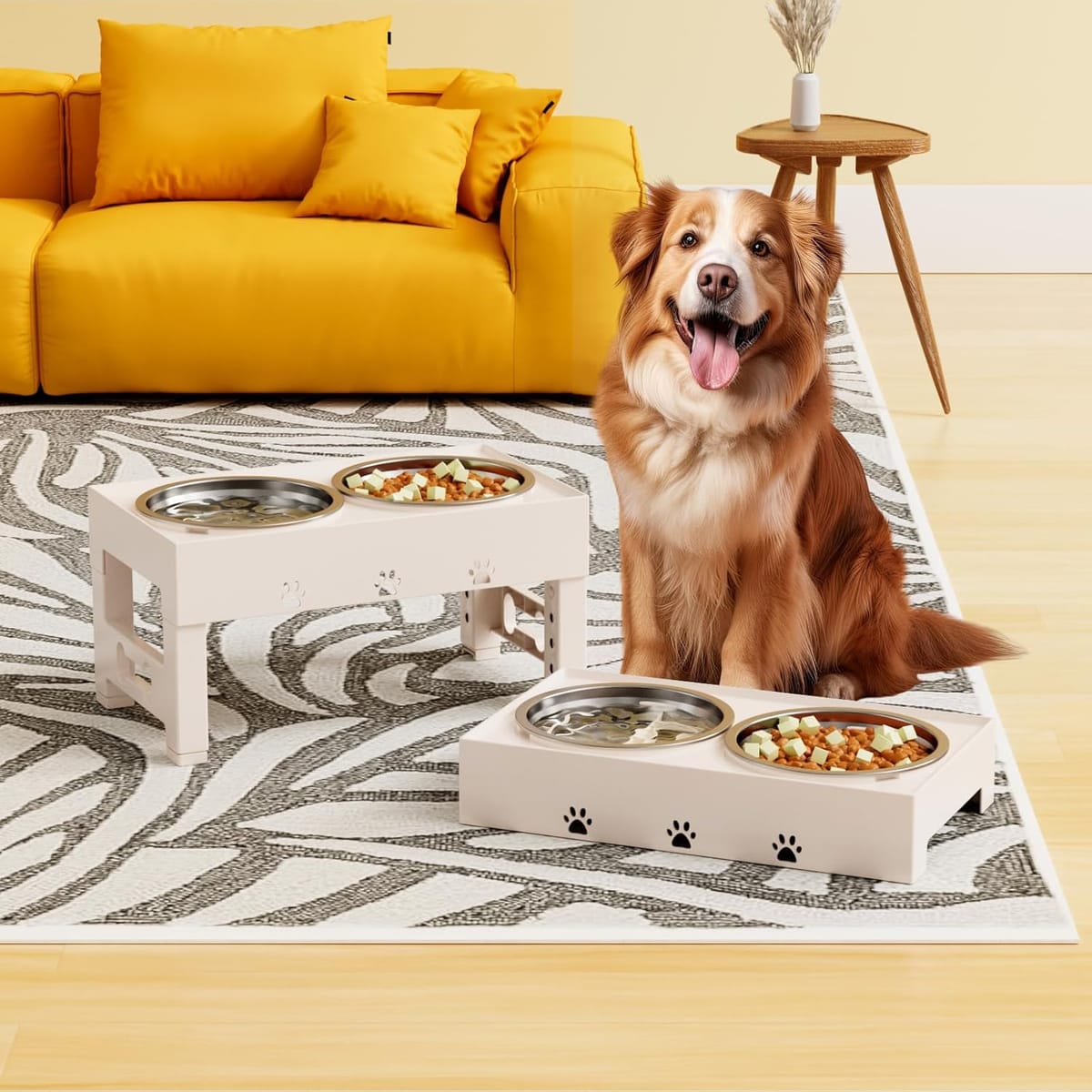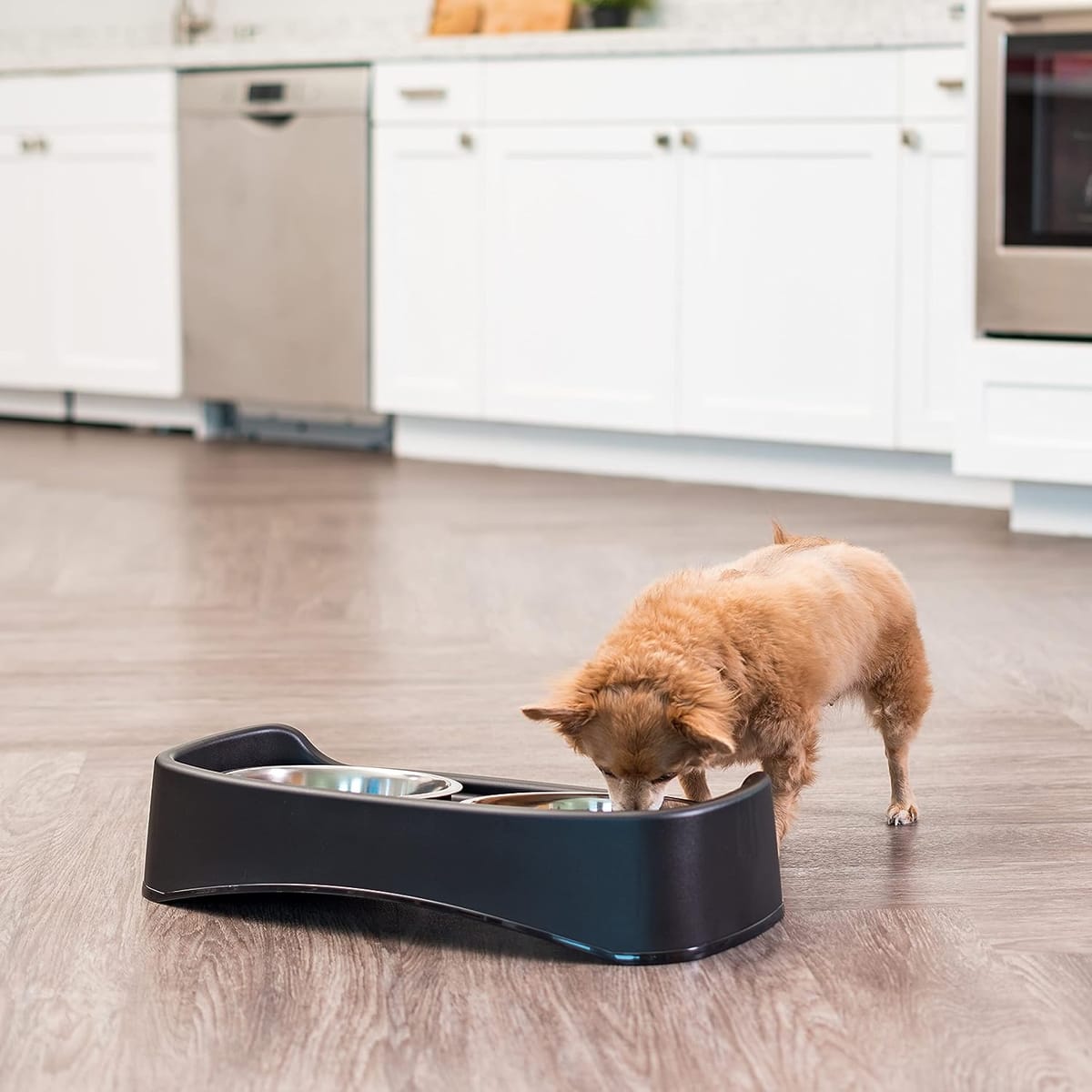Key Takeaways:
- Elevated dog bowls can offer benefits like improved posture and reduced air intake for certain dogs.
- The use of raised bowls is debated among vets, with considerations for specific breeds and health conditions.
- Pet owners should consult with veterinarians to determine the best feeding method for their furry friends.
Understanding Elevated Dog Bowls

When it comes to feeding our furry friends, the choice of food and water bowls can be as crucial as the food itself. Elevated dog bowls, also known as raised feeders, have become a popular choice among pet owners. But what do vets say about elevated dog bowls? The American Veterinary Medical Association and other experts in veterinary medicine have weighed in on this topic, offering insights into the potential benefits and risks associated with these feeding tools.
Elevated dog bowls are designed to raise the feeding bowl off the ground, allowing dogs to eat in a more natural stance. This can be particularly beneficial for larger breeds and giant breed dogs, such as Great Danes, which may experience joint problems or discomfort when bending down to floor level. By using a dog bowl stand, these dogs can enjoy a more comfortable eating position, potentially improving their posture and reducing strain on their necks and joints.
The Benefits of Raised Dog Bowls
One of the primary advantages of a raised food bowl is the potential for improved posture. For larger dogs and senior dogs, bending down to eat from floor-level bowls can be uncomfortable and may exacerbate existing joint issues. By raising the food and water bowls, pet owners can help their dogs maintain a more natural stance during meal times, which can lead to better posture and reduced strain on the body.
Another benefit of elevated feeders is the potential to prevent bloat, a serious condition known as gastric dilation volvulus (GDV). This condition is particularly common in deep-chested dogs and high-risk breeds. By using raised bowls, some vets believe that dogs may experience reduced air intake while eating, which could lower the risk of bloating. However, it’s important to note that more research is needed to understand the relationship between elevated feeders and bloat prevention fully.
Potential Risks of Elevated Dog Bowls
While there are several benefits to using elevated dog bowls, there are also potential risks that pet owners should consider. Some studies suggest that raised feeders may actually increase the risk of bloat in certain dogs, particularly those that are fast eaters. The theory is that by elevating the bowls, dogs may consume their food more quickly, leading to increased air intake and a higher likelihood of developing bloat.
Additionally, not all dogs may benefit from elevated feeders. For smaller breeds or dogs without joint issues, the use of raised bowls may not provide any significant advantages. In fact, some dogs may find it more comfortable to eat from floor-level bowls, as this mimics the natural feeding position of wild canids. Therefore, it's crucial for pet owners to consider their dog's breed, size, and individual needs when deciding whether to use elevated dog bowls.
What Vets Recommend for Different Breeds
Veterinarians often recommend elevated dog feeders for certain breeds, particularly larger breeds and giant breeds. These dogs, such as Great Danes and other large dog breeds, may benefit from the improved posture and reduced strain on their joints that raised feeders can provide. For these dogs, using a dog bowl can make meal times more comfortable and enjoyable.
However, for smaller breeds or dogs without specific health concerns, vets may advise against the use of elevated feeders. The vast majority of dogs may not require raised bowls, and in some cases, using them could lead to potential risks, such as increased air intake and a higher risk of bloat. It’s essential for pet owners to consult with their veterinarian to determine the best feeding method for their dog’s breed and individual needs.
The Role of Elevated Bowls in Preventing Bloat
Bloat, or gastric dilation volvulus, is a life-threatening condition that affects many deep-chested dogs and high-risk breeds. The condition occurs when the stomach fills with gas and twists, cutting off blood supply and leading to severe complications. While the exact cause of bloat is not fully understood, some vets believe that a raised dog bowl may help reduce the risk by allowing dogs to eat in a more comfortable position and reducing air intake.
However, the relationship between elevated feeders and bloat prevention is complex, and more research is needed to draw definitive conclusions. Some studies suggest that raised bowls may actually increase the risk of bloat in certain dogs, particularly those that eat quickly. Therefore, it’s crucial for pet owners to consider other factors, such as feeding time, portion size, and the dog’s eating habits, when trying to prevent bloat.
Choosing the Right Elevated Dog Bowl

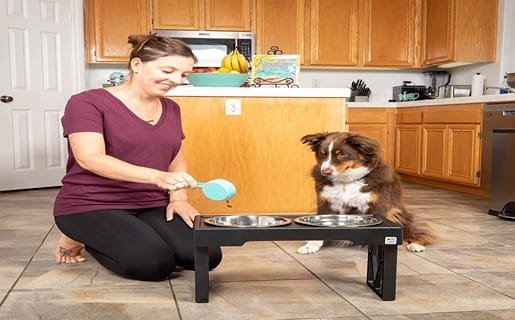

When selecting an elevated dog bowl, pet owners should consider several factors to ensure they choose the best option for their furry friend. The height of the raised bowl is crucial, as it should allow the dog to eat comfortably without straining their neck or back. For larger breeds, a taller dog bowl stand may be necessary, while smaller dogs may require a lower elevation.
Material is another important consideration. Stainless steel bowls are a popular choice due to their durability, ease of cleaning, and resistance to bacteria. Additionally, pet owners should look for bowls that are dishwasher safe for easy maintenance. By choosing the right elevated dog bowl, pet owners can provide their dogs with a comfortable and hygienic feeding experience.
The Importance of Consulting a Veterinarian
Before making any changes to their dog's feeding routine, pet owners should consult with a veterinarian. Vets can provide valuable insights into the potential benefits and risks of elevated dog bowls, taking into account the dog's breed, size, and individual health needs. By working closely with a veterinarian, pet owners can make informed decisions that promote their dog's well-being.
Veterinarians can also offer guidance on other aspects of feeding, such as portion sizes, meal frequency, and the type of food that is best suited for the dog's breed and age. By considering all these factors, pet owners can ensure that their dogs receive the nutrition they need to thrive.
Case Studies: Real-Life Experiences with Elevated Dog Bowls
Many pet owners have shared their experiences with elevated dog bowls, highlighting both the benefits and challenges they have encountered. For instance, one owner of a Great Dane reported that using a raised feeder significantly improved their dog's posture and reduced the strain on their joints during meal times. This change led to a noticeable improvement in the dog's overall comfort and mobility.
Conversely, another pet owner with a smaller breed dog found that elevated bowls did not provide any significant benefits. In fact, their dog seemed to prefer eating from floor-level bowls, which allowed for a more natural feeding position. These real-life examples underscore the importance of considering each dog's unique needs and consulting with a veterinarian before making changes to their feeding routine.
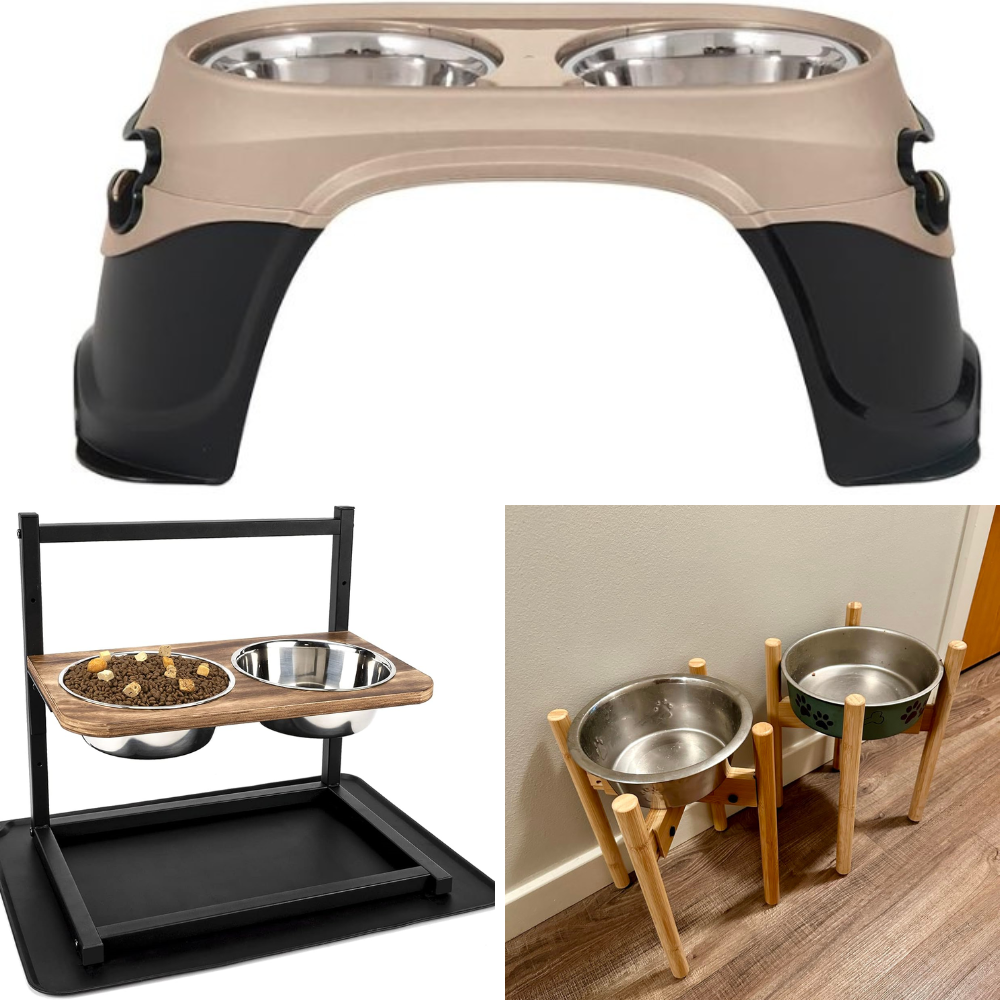
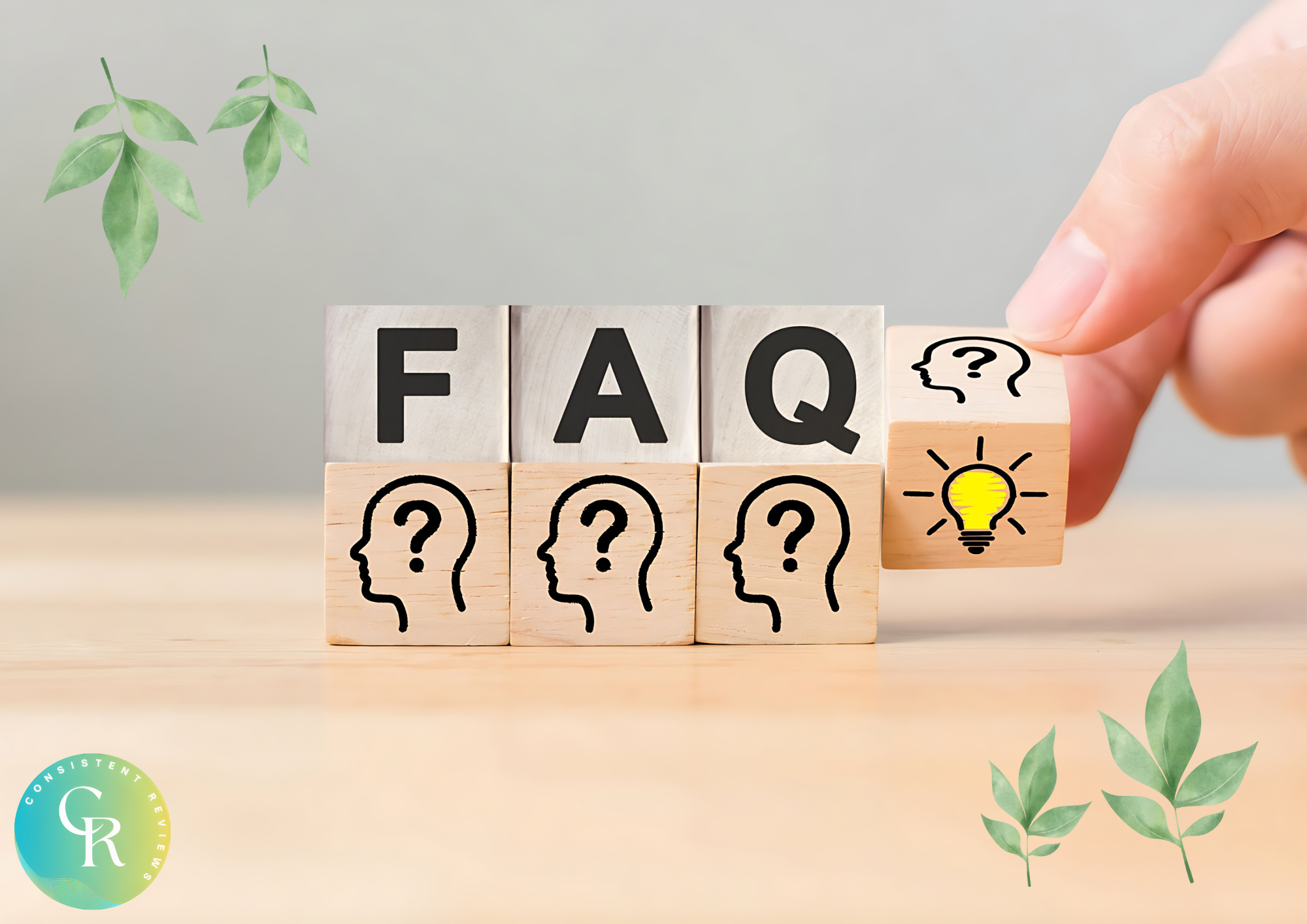
Are elevated dog bowls good for all dogs?
Elevated dog bowls can be beneficial for larger breeds, senior dogs, and those with joint issues, as they promote a more comfortable eating position. However, they may not be necessary for smaller breeds or dogs without specific health concerns. It's important to consult with a veterinarian to determine the best feeding method for your dog.
Can elevated dog bowls prevent bloat?
While some vets believe that elevated dog bowls may help reduce the risk of bloat by allowing dogs to eat in a more comfortable position, the relationship is complex. In some cases, raised feeders may increase the risk of bloat, particularly for fast eaters. Pet owners should consider other factors, such as feeding time and portion size, to help prevent bloat.
What should I consider when choosing an elevated dog bowl?
When selecting an elevated dog bowl, consider the height of the bowl, the material (such as stainless steel), and whether it is dishwasher safe. The bowl should allow your dog to eat comfortably without straining their neck or back. Consulting with a veterinarian can help you choose the best option for your dog's needs.

Elevated dog bowls can offer several benefits, such as improved posture and reduced strain on joints, particularly for larger breeds and senior dogs. However, the use of raised feeders is not without potential risks, including an increased risk of bloat for some dogs. Pet owners should carefully consider their dog's breed, size, and individual health needs when deciding whether to use elevated dog bowls. Consulting with a veterinarian is essential to ensure that the chosen feeding method promotes the dog's overall well-being.
